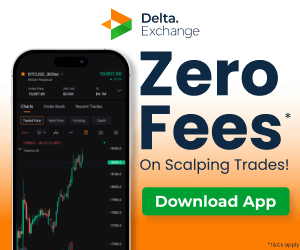A little-known SaaS company, Janover Inc. (NASDAQ: JNVR), jolted Wall Street this week with an eye-popping 840% stock surge. The catalyst? A sudden pivot from real estate software to Solana blockchain integration. As shares rocketed from $4.44 to $40.25 in hours, investors scrambled to understand: Is this a fleeting frenzy or a blueprint for merging traditional finance with crypto? Let’s unpack the upheaval.
From Real Estate Loans to Blockchain Nodes
Founded in 2018, Janover built its reputation connecting commercial real estate borrowers with lenders through AI-driven software. Its niche platform streamlined loan discovery for projects like apartment complexes, attracting over 1,000 lenders. Yet, despite a 2023 NASDAQ listing, Janover remained obscure until April 7, 2025.
Suddenly, the company announced a seismic shift: adopting Solana’s SOL token as its core treasury asset and rebranding as DeFi Development Corporation. While retaining its SaaS operations, Janover now plans to operate Solana validator servers that secure the blockchain to earn staking rewards. This dual-model strategy merges steady software revenue with crypto’s high-risk, high-reward potential.
Kraken Veterans Seize Control
Behind the overhaul lies a new leadership team. Former Kraken executives, led by Joseph Onorati, acquired a controlling stake, injecting $42 million via convertible notes and warrants. Backed by Pantera Capital and Arrington Capital, the funding fuels Janover’s crypto ambitions.
Onorati, now CEO, emphasised immediate SOL acquisitions and validator operations. “We’re building alignment with Solana’s ecosystem,” he told CNBC. Meanwhile, ex-Kraken engineer Parker White, tasked with managing validators, brings experience overseeing $75 million in Solana stakes. Notably, founder Blake Janover retains oversight of the original SaaS division, ensuring continuity.
Solana at the Core
Janover’s plan diverges sharply from predecessors like MicroStrategy, which hoards Bitcoin passively. Instead, the firm aims to actively engage Solana’s proof-of-stake network. By running validators, Janover can earn 5-7% annual yields rewards it plans to reinvest into more SOL tokens.
This “flywheel” strategy banks on Solana’s technical edge: blazing-fast transactions and low fees. SOL’s price climbed 11% post-announcement, hinting at market optimism. However, Solana remains volatile, with a 45% drop earlier in 2025. Janover’s gamble hinges on balancing staking income with SOL’s price swings.
Market Rally On Hype
The pivot ignited trading chaos. Pre-market shares leaped from $4.44 to $10, peaking at $48.47 intraday before settling at $40.25, an 842% gain. Volume exploded from thousands to 25 million shares, driven by retail traders. Yet, volatility struck swiftly: shares plunged 31% the next day, mirroring meme-stock turbulence.
Analysts liken Janover to MicroStrategy’s 2020 Bitcoin surge but caution against hype. “This isn’t just speculation,” argued Bernstein’s Gautam Chhugani. “Janover’s model could pioneer active crypto treasuries.” Still, skeptics note the company’s tiny $20 million pre-surge valuation amplifies risk.
Leadership Shift
Janover’s transformation relies on its Kraken-rooted brain trust. Onorati, a crypto strategist, steers the treasury shift, while White’s hybrid finance-blockchain background bridges technical execution. Marco Santori, Kraken’s ex-legal chief, plays a critical role in navigating regulatory grey areas as U.S. scrutiny of Solana intensifies.
Crucially, the team avoids sidelining Janover’s legacy leaders. Founder Blake Janover and CFO Bruce Rosenbloom continue managing SaaS operations, ensuring software revenue cushions crypto experiments. This hybrid structure aims to balance innovation with stability.
Volatility, Competition, and Regulatory Headwinds
Despite the buzz, challenges abound. SOL’s price swings could destabilise Janover’s treasury, while rivals like Ethereum and Avalanche threaten Solana’s market share. Technical hurdles like maintaining validator uptime add operational complexity.
Regulatory uncertainty compounds risks. Unlike Bitcoin, Solana lacks clear U.S. regulatory standing, exposing Janover to potential legal battles. Meanwhile, the SEC monitors corporate crypto holdings closely, as seen in past lawsuits against Coinbase and Binance.
A New Playbook or Cautionary Tale?
Janover’s audacious pivot raises a pivotal question: Can small-cap firms leverage crypto to disrupt traditional finance? While MicroStrategy’s Bitcoin playbook inspired imitators, Janover’s active Solana strategy breaks new ground if it works.
Success could spur a wave of altcoin-focused treasuries, blending SaaS stability with crypto yields. Conversely, failure might deter similar experiments, reinforcing crypto’s reputation as a speculative gamble. For now, Janover straddles two worlds, its fate tied to Solana’s ascent and its ability to navigate uncharted terrain.
As markets watch closely, one truth emerges: In the crypto age, even quiet SaaS stocks can rewrite the rules overnight. Whether Janover’s surge marks a revolution or a mirage remains to be seen.
Written By Fazal Ul Vahab C H



